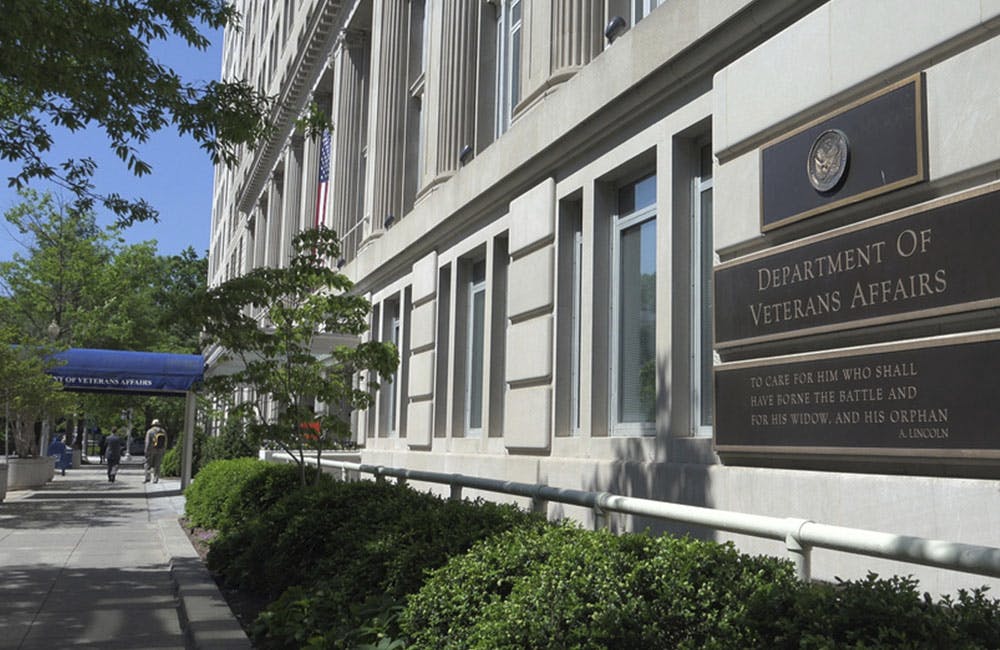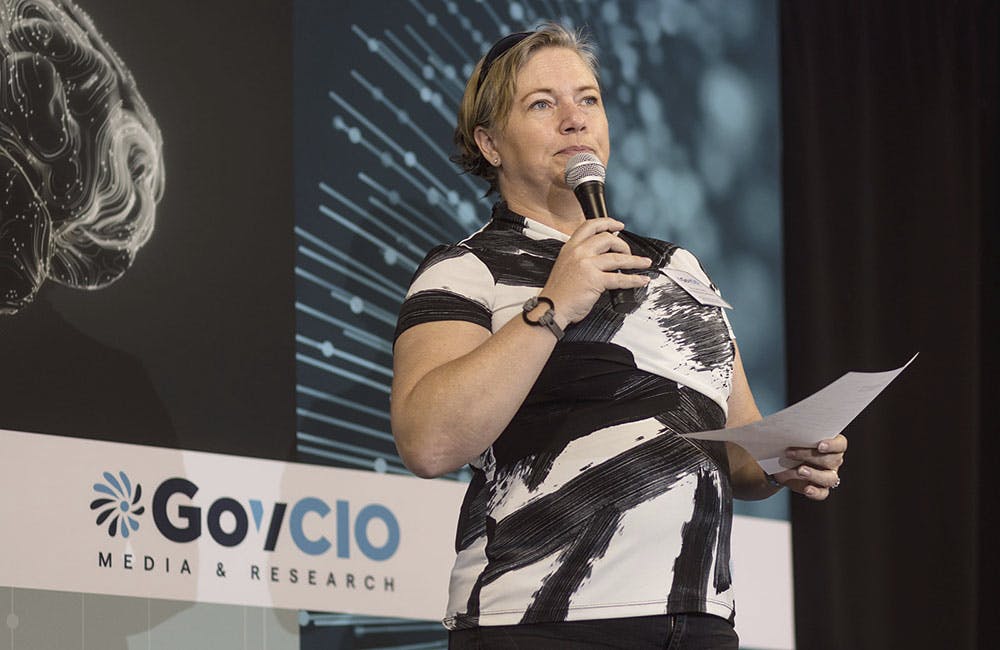The Call for a National Approach to COVID-Tracking Apps

Digital vaccine credentialing and exposure notification apps for COVID-19 can be crucial pieces of technology that many organizations are utilizing in return-to-work strategies. But according to a recent Government Accountability Office report, there are still many barriers in their reliability that could benefit from a more centralized approach.
Public health leaders have advocated for the tools’ inclusion in workplace strategies early on. Plus, President Biden’s Sept. 2021 executive order outright required COVID-19 vaccination for federal employees — necessitating a need for employers to collect and document this information for compliance. The Centers for Disease Control and Prevention (CDC) has advised the public on using the tools for contact tracing and vaccine documentation and even partnered with the Massachusetts Institute of Technology’s Lincoln Laboratory to research these tools.
Digital vaccine credentials certify that a person has been vaccinated or tested negative for COVID-19, and exposure notification apps allow for more rapid and broader contact tracing — notifying users if they were near a person who later tested positive for an infectious disease.
NASA is one agency that developed its own internal system to manage and document these efforts for its workforce. But elsewhere, approaches vary due to associated challenges with privacy, effectiveness, interoperability and equity that may limit their use and potential benefits, according to Hayden Huang, GAO’s assistant director for science, technology assessment, and analytics, during FCW’s Health IT Workshop last month.
In the U.S., because vaccination and testing are not centralized and vary across states and territories, there is significant fragmentation, Huang noted.
“It can be tricky for someone who is in charge of checking the credentials to know which ones are valid and which ones are intended for use for a particular purpose, given the diversity of such credentials; however, effective implementation of credentials can confirm many benefits to society on mitigating or otherwise addressing the risks of post-contact with others,” Huang said.
Additionally, Huang noted that there is limited data on how notifications were responded to, like the extent to which a recipient, after receiving a notification, got tested or quarantined, which presented potential usage limitations.
To bridge these gaps, Huang said that there needs to be clearer standards on what information is tracked and processed. For example, for exposure notification apps, an individual’s location is constantly monitored. Huang said that there should be structured guidelines around who has access to that information and identify how it is handled.
“Both digital credentials and exposure notification apps are generally accessing someone’s information — potentially medical information, identifying information and location information. While the use of digital credentials may reduce the risk of losing a vaccination card … there are other concerns about how the data through the credential access,” he said.
The second challenge GAO identified was interoperability. Because different digital credentials require different formats, permissions or outputs, it could be difficult to implement a nationwide standard without interoperable systems and tools.
“I think diagnostic results can actually complicate this because of the fact that there may be different standards in terms of, for example, how recently somebody needs to be tested in order for results to be considered valid. If different regions rely on different standards of acceptance, this could definitely challenge the adoption and utility of these credentials,” Huang said.
GAO also identified equity as a key challenge to these new tools. Because digital credentialing and exposure notification apps require smartphones, network coverage and digital fluency, there are barriers to which populations are able to use these tools.
Huang said that a national strategy could encourage adoption of digital credentialing and exposure notification apps by creating messaging, funding, and steps that can help address these challenges.
“To help address some of the colleges, we identified several policy approaches,” Huang said. “Some policy approaches include working to establish effectiveness and utility of these credentials and apps. That includes whether they work, how well they do what they’re supposed to, how many people are using them, and what are the benefits gained? Additionally, development of standards can help address concerns relating to privacy and interoperability.”
In the wake of new and emerging variants and cases of COVID-19 on the rise, these tools remain relevant in the push for ongoing vaccination and booster shots.
“Our bottom-line message for both technologies … is that they offer a lot of promise that facilitate various types of responses to the ongoing pandemic, as well as potentially for future pandemics, if the proper framework could be put into place,” Huang said.
This is a carousel with manually rotating slides. Use Next and Previous buttons to navigate or jump to a slide with the slide dots
-

Modernizing Critical Infrastructure in the Face of Global Threats
Officials are expanding the latest strategies in boosting defense infrastructure, including securing satellite communications, upgrading enterprise-wide technology, optimizing data management.
20m watch -

Trump AI Orders Call for Speed in Building Infrastructure
The directives call for expanding AI infrastructure, streamlining federal permitting and promoting AI exports.
4m read -

DOD Accelerates Software Modernization with Agile DevSecOps Push
The Pentagon's software implementation plan tackles cultural hurdles and integrates security early to deliver critical capabilities faster.
6m read -

White House Unveils AI Action Plan to Secure Global Dominance
The strategy outlines steps to accelerate private sector innovation, build critical infrastructure and advance U.S. leadership in AI policy and security.
3m read -

VA's Platform One Powers Rapid Innovation to Bolster Digital Services
VA's Platform One accelerates software development timelines from weeks to hours, ultimately enhancing digital services for veterans.
5m read -

Federal Leaders Receive Federal IT Efficiency Flywheel Awards from GovCIO Media & Research
Five federal IT leaders received Flywheel Awards for driving innovation and modernizing technology at the Federal IT Efficiency Summit.
5m read -

Doing More with Less is Muscle Memory for IRS, Former Deputy CIO Says
Darnita Trower discusses her experience, the legacy she’s left behind and how she pushed the IRS to modernize itself,
20m watch -

Opinion: Original Intelligence Is the Missing Piece for AI Transformation
Limitations of AI agents and development drive growing needs for workforce development and "original intelligence."
3m read -

VA CIO Targets Modern IT and Smarter Workforce Alignment
Agency leaders told lawmakers they are focused on trimming legacy systems and restructuring its workforce to streamline operations.
3m read -

Pentagon's $200M AI Contracts Signal Broader Effort to Transform Talent
The Army is leveraging Silicon Valley, reservist programs and new hiring strategies to integrate critical digital skills in its ranks.
5m read -

AI Foundations Driving Government Efficiency
Federal agencies are modernizing systems, managing risk and building trust to scale responsible AI and drive government efficiency.
43m watch -

Inside DOD’s Push to Grow the Cyber Workforce Through Academia
Diba Hadi gives her first interview since becoming principal director of the DOD’s Cyber Academic Engagement Office.
15m listen
















